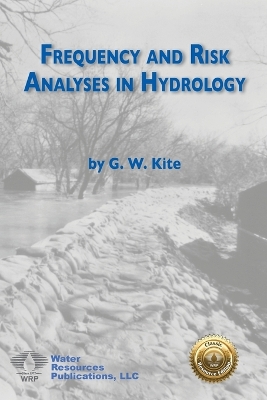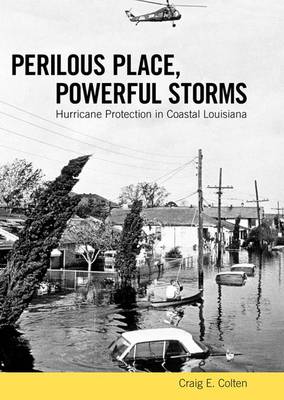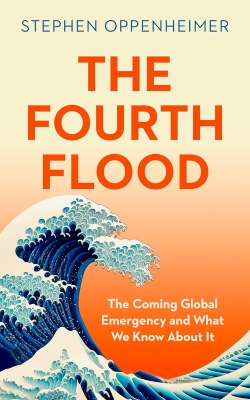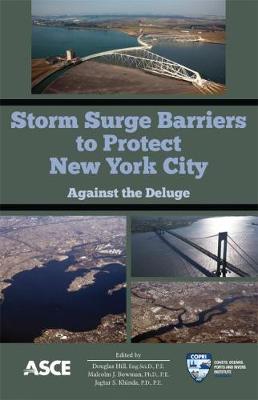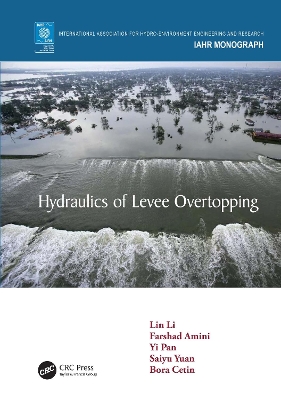Flood Embankment Vegetation Management Trials - Final Report SR1 (Environment Agency Report)
Communication and Dissemination of Probabilistic Flood Warnings SR4 (Environment Agency Report)
Testing the Erosion Resistance of Vegetated Floodbanks SR2 (Environment Agency Report)
Flood Warning for Vulnerable Groups (Enviroment Agency Science Report S., W5C-018/2)
by Jane Fielding, Diana Thrush, and Kate Burningham
This book is a basic introduction to water distribution systems, including definition of its common elements, modelling theory, basic planning, operational and management issues, as well as some advanced topics including leakage management, optimal design, asset planning and management, etc. Each chapter is written from both the academic and industrial points of view and cover the basic topics on water distribution networks - a uniquely useful book - applicable across the sectors. Water Distribu...
Reservoir operation is a multi-objective optimization problem, and is traditionally solved with dynamic programming (DP) and stochastic dynamic programming (SDP) algorithms. The thesis presents novel algorithms for optimal reservoir operation, named nested DP (nDP), nested SDP (nSDP), nested reinforcement learning (nRL) and their multi-objective (MO) variants, correspondingly MOnDP, MOnSDP and MOnRL. The idea is to include a nested optimization algorithm into each state transition, which reduces...
Coastal Flood Boundary Conditions for UK Mainland and Islands (Environment Agency Report)
Development and Flood Risk (Planning Policy Statement, No. 25 - Practice Guide)
The New Orleans Hurricane Protection System
by ASCE Hurricane Katrina External Review Panel
On the morning of August 29, 2005, Hurricane Katrina struck southeast Louisiana and triggered what would become one of the worst disasters ever to befall an American city. The devastation was so extensive, and the residual risk looms so ominous, that, more than a year later, the future of New Orleans remains clouded. The members of the ASCE Hurricane Katrina External Review Panel have conducted an in-depth review of the comprehensive work of the United States Army Corps of Engineers (USACE) Inte...
Frontiers in Flood Research (IAHS Proceedings & Reports, #305)
Sponsored by the Council on Disaster Risk Management Sea Level Rise and Coastal Infrastructure: Prediction, Risks, and Solutions analyses the challenges posed by rising sea levels and climate change. Scientists estimate that global sea levels could rise by as much as 20 feet in this century, directly affecting about 100 million people worldwide. Although the problems stemming from higher sea levels are formidable, immediate actions can be identified and executed to lessen the impact of rising...
The hurricane protection systems that failed New Orleans when Katrina roared on shore in 2005 were the product of four decades of engineering hubris, excruciating delays, and social conflict. In Perilous Place, Powerful Storms, Craig E. Colten traces the protracted process of erecting massive structures designed to fend off tropical storms and examines how human actions and inactions left the system incomplete on the eve of its greatest challenge. Hurricane Betsy in 1965 provided the impetus fo...
Catastrophic Flooding (Routledge Library Editions: Geology, #4) (Binghamton Symposia in Geomorphology, #18)
This book, first published in 1987, contains a collection of papers presented at the 18th Binghamton Symposium, focusing on the topic of catastrophic flooding. These papers make the case for the careful collection and interpretation of data from which the importance and effects of catastrophic flooding may be deduced. Questions tackled include: what are the causes and effects of catastrophic flooding? What parameters should be used to measure them? What effect do they have on erosional and depos...
We know we are changing the climate. We now know more about the human causes of our planet’s warming, and likely future effects including some sea level rise. Scientists have a growing understanding of triggers and feedback loops. But new evidence suggests we have missed the most important tipping point of all. This urgent book by Dr Stephen Oppenheimer updates his work on the previous three catastrophic rises in world sea level during the past 14,000 years with the latest field research on sub...
An Introduction to Application of Unsteady Flow Models of Rivers
by J Paul Guyer
FCRM Volunteer Baseline Data and Typology Development
Storm Surge Barriers to Protect New York City
Papers from a conference, Against the Deluge: Storm Surge Barriers to Protect New York City, held in Brooklyn, New York, March 30-31, 2009. Conference sponsored by the Infrastructure Group of the Metropolitan Section of ASCE; Environmental Sciences Section of the New York Academy of Sciences; Department of Civil Engineering, Polytechnic Institute of New York University. Publication sponsored by the Coasts, Oceans, Ports, and Rivers Institute of ASCE. This report contains 16 papers exploring th...
Hydraulics of Levee Overtopping (IAHR Monographs)
by Lin Li, Farshad Amini, Yi Pan, Saiyu Yuan, and Bora Cetin
Earthen levees are extensively used to protect the population and infrastructure from periodic floods and high water due to storm surges. The causes of failure of levees include overtopping, surface erosion, internal erosion, and slope instability. Overtopping may occur during periods of flooding due to insufficient freeboard. The most problematic situation involves the levee being overtopped by both surge and waves when the surge level exceeds the levee crest elevation with accompanying wave ov...
Flood Hazard for Nuclear Power Plants on Coastal and River Sites (IAEA Safety Standards)
This Safety Guide discusses the phenomena, both natural and human induced, that may cause floods or droughts at coastal and river sites, and gives an outline of the methods that can be used for, and the critical factors involved in, the evaluation of such events and of their associated effects. Possible combinations of two or more phenomena that can give rise to flooding at a site are also discussed.

